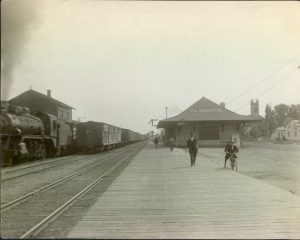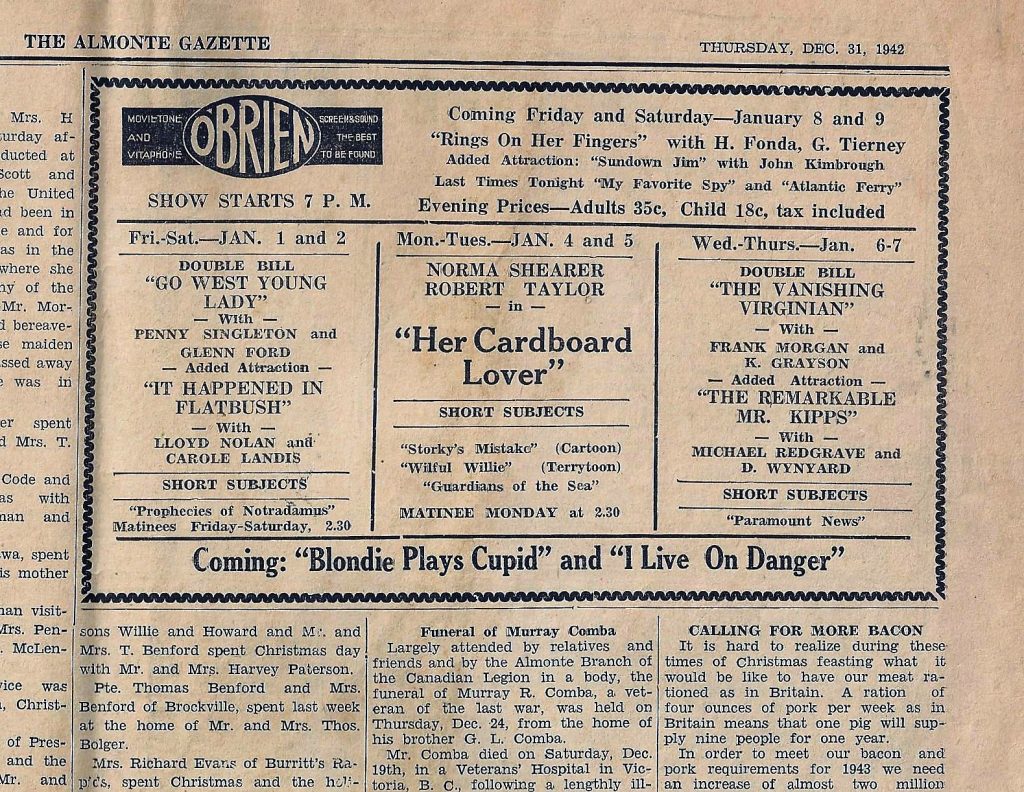A Community Rushes to Help
The blowing snow whipped past twelve-year old Lolly Edwards as he walked home on that cold Sunday night. Taking a short cut, he made his way through the train station grounds. The passenger train was still there. He had just decided to wait and see it off when a loud screeching ripped through the air. To Lolly, it seemed as though something was pushing one passenger car into the other.
He ran home.
Bells were Ringing
At first, his mother didn’t believe him, but when the fire sirens wailed and church bells rang, she realized the truth and panicked. Lolly’s older brother was on that train. Quickly, Lolly was sent to the station to search for his brother.
Despite the chaos, Lolly found his brother almost immediately, alongside a group of soldiers from the troop train. They were facing off with the owner of the O’Brien Theatre, threatening to remove the doors of the building if he didn’t allow entry for the wounded. The doors came off, and when the twenty beds in Almonte’s Rosamond Hospital were filled, the O’Brien Theatre and Town Hall became temporary hospitals and morgues.
Caring for the Wounded
Two of the nurses who brought aid to survivors were Mary and Margaret Coderre. The sisters had returned home from Kingston to be with their father for Christmas. In her diary, Mary described how she learned of the train wreck and the days that followed…
I first became aware of the disaster when my brother Larry burst into our house (only a few dozen feet from the tracks) half-carrying a soldier with a badly broken leg. His bone was protruding from his skin and he was bleeding profusely. Margaret and I, with Larry’s help, broke up an orange crate to create splints, and tore up a sheet to make bandages. Once we were able to control the bleeding, we carried him across the street to the Town Hall where a temporary treatment centre and morgue had been set up, as the Rosamond Hospital was quickly overwhelmed. We worked there all night.
I had nursed sick people for several years, but never have I seen the horrors like I did that night. In the morning, we reported to the Rosamond Hospital to help their tired doctors and nurses. The next few days are a blur, but I do remember tending a woman whom I think had broken every bone in her body. She died in my arms.



